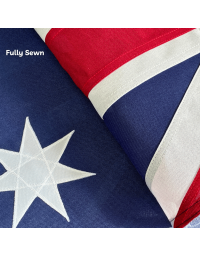The Meaning and Importance of Remembrance Day in Australia

Remembrance Day is a time for Australians to come together and reflect on the sacrifices made by those who served and died in wars, conflicts, and peacekeeping operations. Observed each year on November 11, this day marks the anniversary of the armistice that ended the hostilities of World War I in 1918. The focus of the day has since expanded to honour all Australian servicemen and women who have fought for the country, sharing in reflection, respect, and gratitude.
What is Remembrance Day in Australia?
At the 11th hour of the 11th day of the 11th month, Australians join the rest of the Commonwealth in a moment of silence to honour the millions of soldiers who died during World War I. The armistice signed on November 11, 1918, brought an end to four years of brutal conflict. While initially known as Armistice Day, the name was changed after World War II to reflect the broader scope of remembrance for those who died in all subsequent wars and military operations.
This moment of silence serves as a powerful reminder of the costs of war and the value of peace. Whether in schools, workplaces, or public ceremonies, Australians pause to remember the sacrifices of the past and reflect on how these sacrifices shape the freedoms enjoyed today.
The Historical Significance of Remembrance Day
World War I was one of the deadliest conflicts in human history, and Australia, as part of the British Commonwealth, played a significant role. Over 60,000 Australian soldiers lost their lives during the war, with countless others returning home bearing physical and emotional scars.
The moment of silence was introduced by King George V in 1919:
To all my people,
Tuesday next, 11 November, is the first anniversary of the armistice, which stayed the world-wide carnage of the four preceding years, and marked the victory of right and freedom.
I believe that my people in every part of the Empire fervently wish to perpetuate the memory of that great deliverance and of those who laid down their lives to achieve it.
To afford an opportunity for the universal expression of this feeling it is my desire and hope that at the hour when the Armistice came into force, the 11th hour of the 11th day of the 11th month, there may be for the brief space of two minutes a complete suspension of all our normal activities.
During that time, except in the rare cases where this may be impracticable, all work, all sound, and all locomotion should cease, so that, in perfect stillness, the thoughts of everyone may be concentrated on reverent remembrance of the glorious dead.
No elaborate organisation appears to be necessary.
At a given signal, which could easily be arranged to suit the circumstances of each locality, I believe that we shall all gladly interrupt our business and pleasure, whatever it may be, and unite in this simple service of silence and remembrance.
GEORGE R.I.
Today, Remembrance Day is not just a reflection on World War I, but on all conflicts where Australian men and women have served. From World War II, Korea, and Vietnam to modern-day peacekeeping missions, the spirit of the day is about remembering those who have fought, served, and sacrificed under our Australian flag.
This is why it’s important that schools, councils, and the general public participate in commemorating Remembrance Day. Teaching younger generations about the history and meaning of this day ensures that the legacy of these sacrifices is never forgotten.
Why is Remembrance Day Important to Commemorate?
The importance of Remembrance Day goes beyond remembering the fallen. It is a day that fosters national unity and encourages Australians to reflect on the values of freedom and peace. The simple act of observing a minute of silence at 11am can unite communities across the country in a shared moment of gratitude and respect.
For schools, Remembrance Day offers an educational opportunity to teach students about Australia’s military history and the human cost of war. Activities like flag ceremonies, creating poppy displays, and reading historical accounts can help younger generations connect with the significance of the day.
For councils and public organisations, organising community events and ceremonies allows citizens to come together and collectively honour the memory of those who served. These public gatherings create a space for reflection and remembrance, offering a chance for veterans, families, and community members to pay their respects.
How to Get Involved in Remembrance Day
Commemorating Remembrance Day can take many forms, whether in public or private. Here are some meaningful ways to get involved:
- Participate in a Minute of Silence: On November 11 at 11am, join the nation in a moment of silence to reflect on the sacrifices made by Australian servicemen and women.
- Fly the Australian National Flag: Schools, councils, and homes across Australia can participate in flag-raising ceremonies. It’s customary to fly the flag at half-mast from 10:30am until 11:02am, after which it should be raised to the peak of the flagpole.
- Wear a Red Poppy: The red poppy is a symbol of remembrance, inspired by the fields of poppies that grew in the battlefields of World War I. Purchasing and wearing a poppy supports the work of the RSL in supporting veterans and their families.
- Organise or Attend a Ceremony: Many councils and community groups host Remembrance Day services, often including wreath-laying ceremonies, flag-raising events, and speeches. These events offer an opportunity for the community to come together in reflection.
- Teach and Learn: For educators, Remembrance Day can be an important part of the curriculum, teaching students about Australia’s military history and the values of service and sacrifice. Schools can organise special lessons, projects, and assemblies to mark the occasion.
A Day to Remember
Remembrance Day in Australia is a time to honour those who gave their lives in service to their country. Whether through quiet reflection, public ceremonies, or wearing a poppy, every act of remembrance is a tribute to the courage and sacrifice of Australia’s servicemen and women. It’s important that the legacy of their bravery is passed on to future generations, ensuring that the lessons of the past are not forgotten.
As we commemorate Remembrance Day, we are reminded of the importance of peace, the cost of freedom, and the enduring strength of the human spirit.





